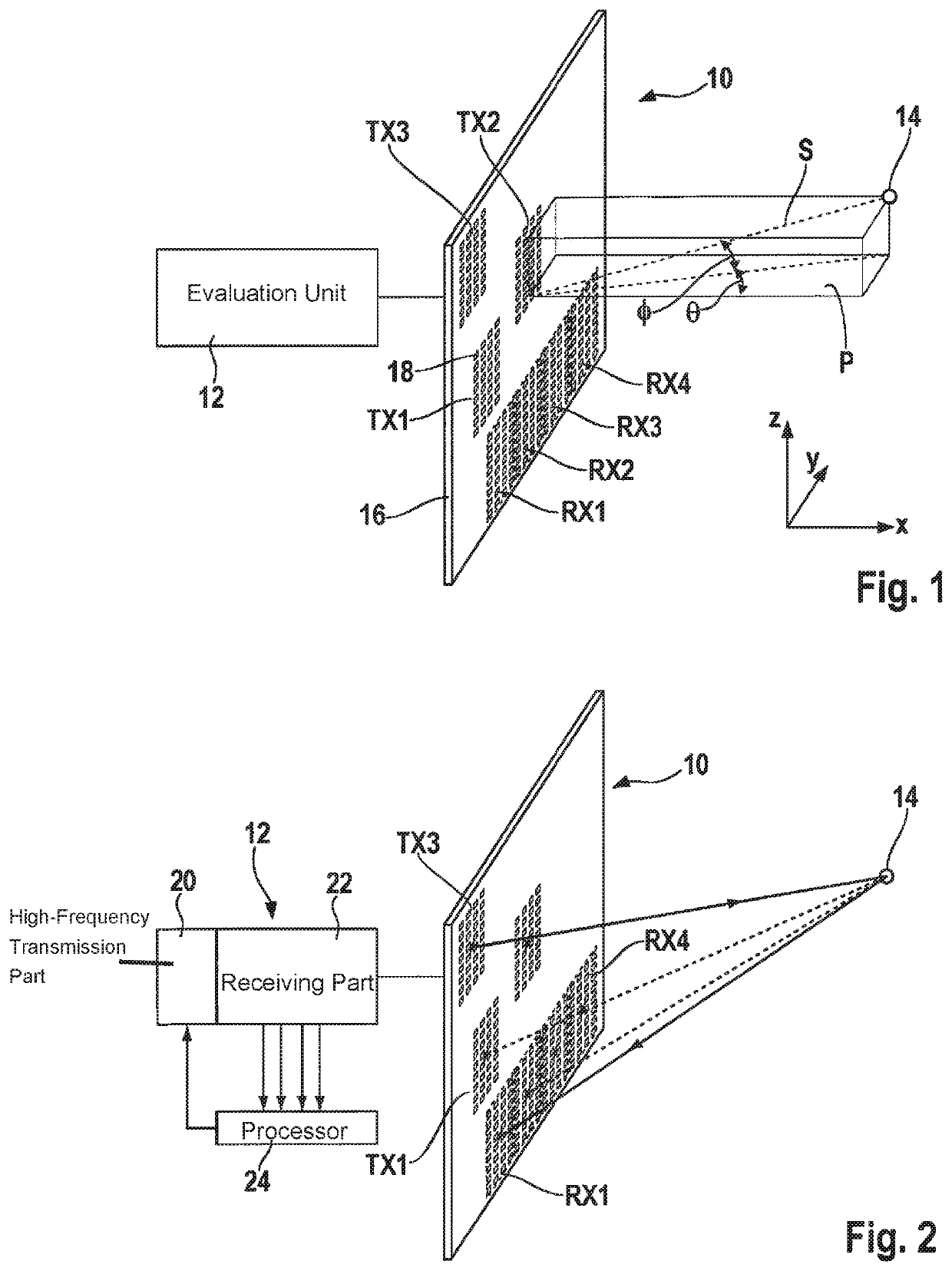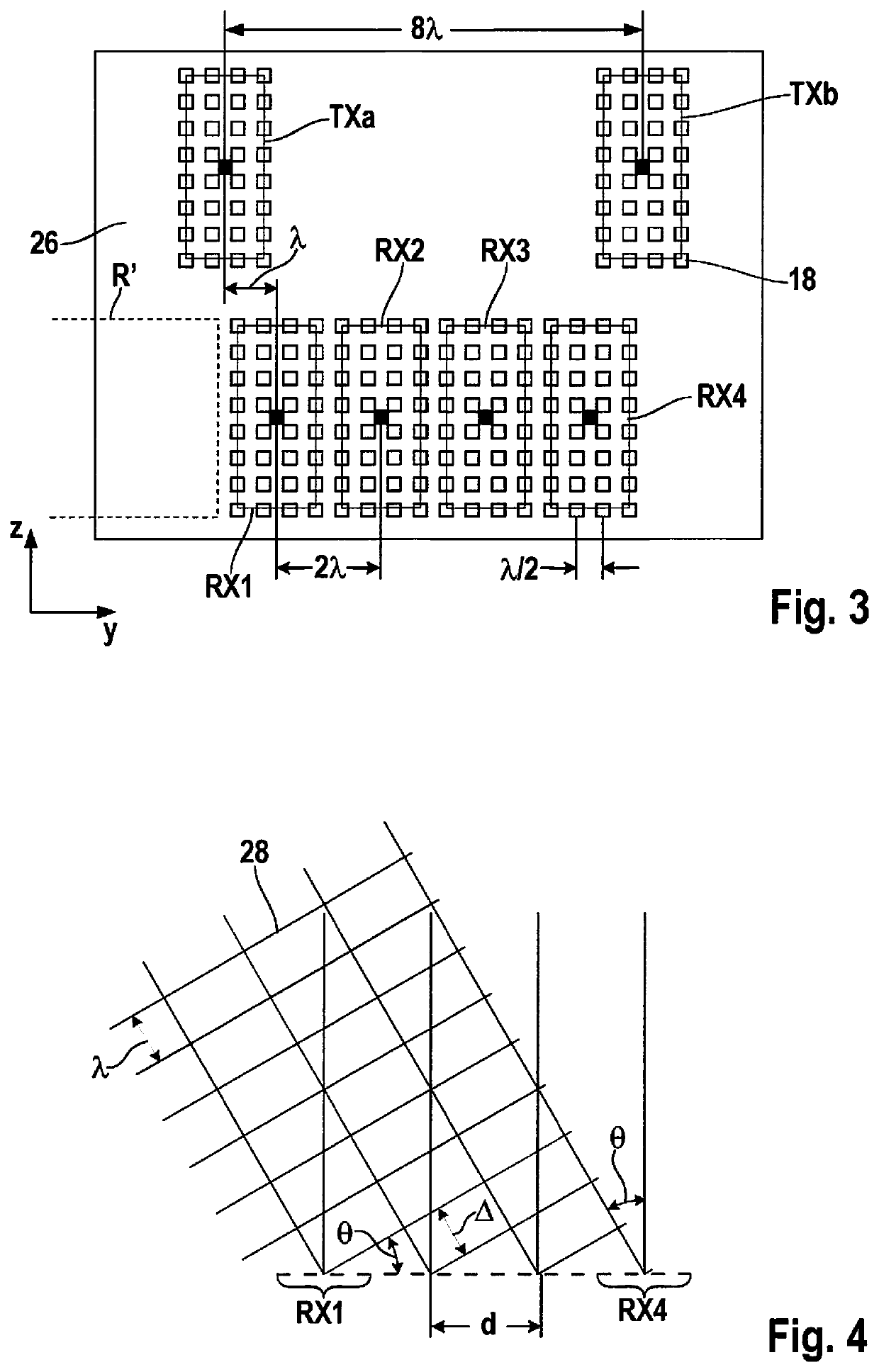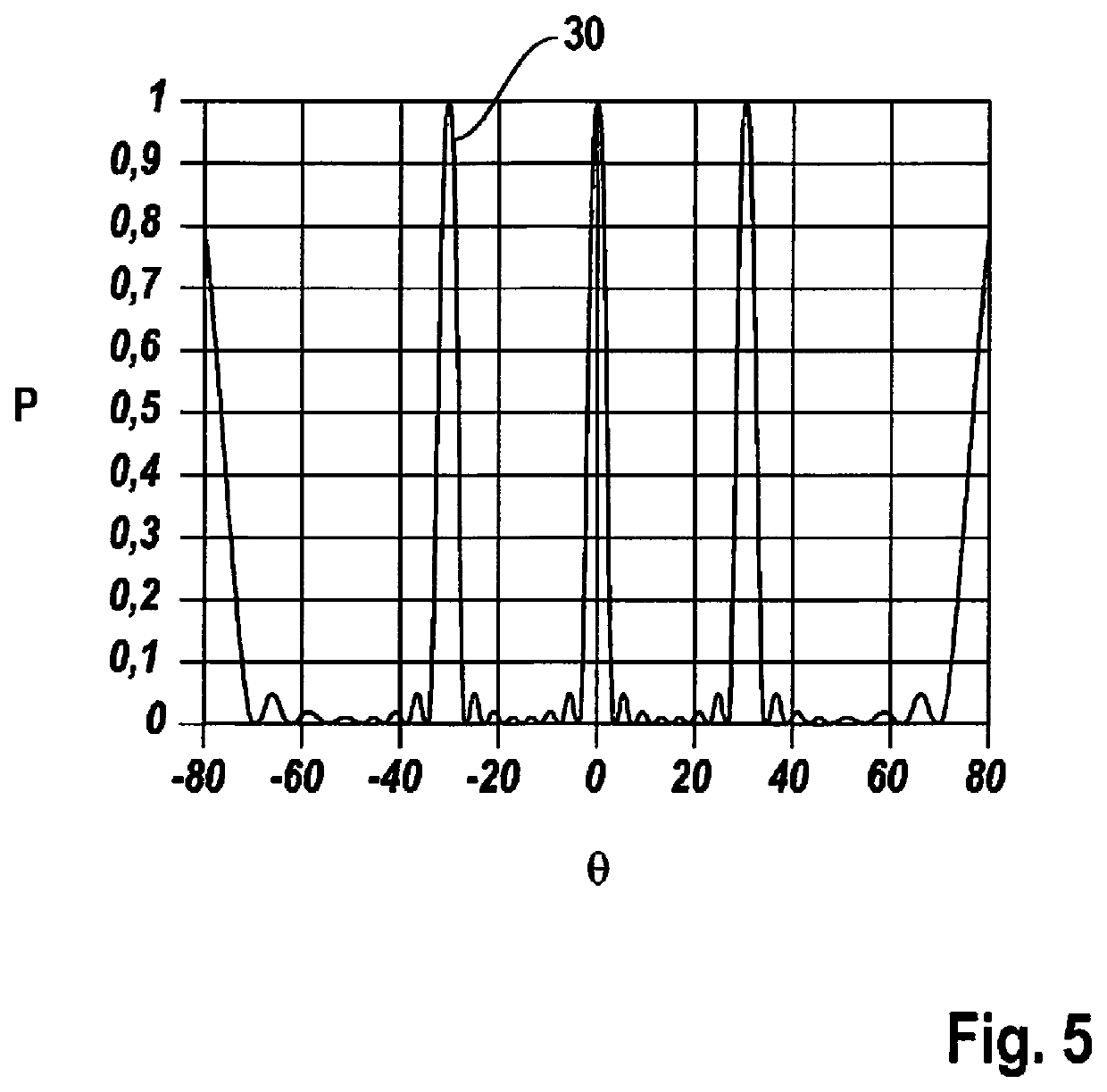MIMO radar sensor for motor vehicles
a technology for motor vehicles and radar sensors, applied in the direction of instruments, using reradiation, particular array feeding systems, etc., can solve the problems of ambiguity between azimuth angles and elevation angles, and achieve the improvement of angular separation capability, accuracy and separation capability, and the effect of improving the apertur
- Summary
- Abstract
- Description
- Claims
- Application Information
AI Technical Summary
Benefits of technology
Problems solved by technology
Method used
Image
Examples
Embodiment Construction
[0022]FIG. 1 shows an antenna array 10 and a control and evaluation unit 12 of a radar sensor, which is used to measure distances, relative speeds as well as direction angles of objects. A single object 14 is shown here as an example. The radar sensor is, for example, installed in the front end of a motor vehicle not shown and is used, in particular, to detect preceding vehicles or other objects ahead of the vehicle.
[0023]The radar sensor shown here is designed specifically for a two-dimensional angle estimation, in which both azimuth angle θ as well as elevation angle ϕ of object 14 is estimated. Elevation angle ϕ in this case is defined as the angle between line of sight S from the center of the radar sensor to object 14 and an azimuthal (horizontal) plane P, which is spanned by a forward direction x of the vehicle and a sideward direction y (first direction y). Azimuth angle θ is defined as the angle between forward direction x and the vertical projection of line of sight S on az...
PUM
 Login to View More
Login to View More Abstract
Description
Claims
Application Information
 Login to View More
Login to View More - R&D
- Intellectual Property
- Life Sciences
- Materials
- Tech Scout
- Unparalleled Data Quality
- Higher Quality Content
- 60% Fewer Hallucinations
Browse by: Latest US Patents, China's latest patents, Technical Efficacy Thesaurus, Application Domain, Technology Topic, Popular Technical Reports.
© 2025 PatSnap. All rights reserved.Legal|Privacy policy|Modern Slavery Act Transparency Statement|Sitemap|About US| Contact US: help@patsnap.com



